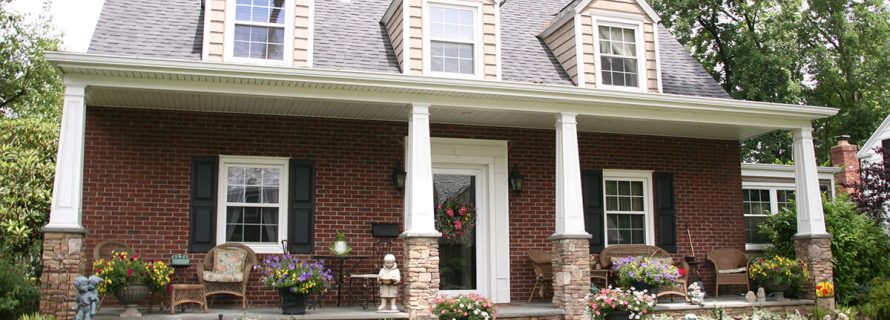4 tips for preparing your home for cold weather

The colder weather in the fall and winter make you more likely to spend a lot more time indoors. As a result, it also makes you more likely to spend money on heat to make your home more comfortable. However, there are many tricks to keeping your house warmer in the cooler months without jacking up the heat and dishing out a ton of money on your oil or gas bills. Alure's designer Bob Sansivero shared tips for enforcing your siding, windows and roof to best protect against the harsh outdoor conditions. Use these tips for keeping your home energy efficient – not just in the fall and winter, but all year long.
1. Install appropriate insulation
Crawl spaces and attics that aren't properly insulated can end up costing you lots of money in the long run. While it may not seem like a major issue to turn up the heat when the weather starts getting colder in the fall, it can result in an alarmingly high bill by the end of the season. Insulating your crawl space can prevent cold air from getting into your home that way, and doing the same to your attic can help prevent heat from escaping.
Sansivero noted that there are many new insulation products on the market designed to best keep your home warm in the cold weather without the need for excessive heat. Insulation materials are rated by R levels, use materials with the highest R value appropriate to the application while always respecting health and safety protocols. Not only can this help in the colder months, but it also helps keep your home cooler in the warmer weather. Investing in appropriate insulation can provide year-round benefits.

2. Reinforce your windows
Since glass doesn't provide the best insulation from the harsh outdoor temperatures, it's necessary to reinforce them with substances that help improve their energy efficiency. Sansivero recommended seeking the help of professionals who can install products that act as a stronger barrier against the outside, which, like proper insulation, can help keep your house warm in the fall and winter and cool in the summer. Different gases can be injected into the glass in the window to slow down the transfer of heat. Argon gas is 10 times denser than air, and krypton gas is 10 times denser than that.
There's also the option of incorporating a mylar film, which acts as a heat mirror and reflects warmth, added Sansivero. Each option provides an effective form of protection that's lacking in many glass windows. As an added bonus, some films can also help protect against damaging UV rays from the sun, which can fade furniture, flooring and other valuable materials in your home.
3. Replace your doors
Making changes to the exterior doors in your home can also provide protection from the cold weather. When it comes to the material of your doors, "the less glass, the better," advised Sansivero. Steel doors provide the highest energy efficiency, but thick, wooden doors are also able to effectively block the conditions of the outdoors. However, wood doors can be troublesome, as they're prone to extensive wear and tear, and hollow wood provides little protection against the outside temperature. Aside from the substance of the doors, their installation is a factor that's just as – if not more – important to consider when making improvements to your home.
"Installation is key," said Sansivero. "If a door is properly placed, you should have no issues with outside weather conditions. Homeowners are better off spending their money on professional installation than expensive products and materials."
4. Choose the right roof
With the colder weather often comes snow and sleet. Make sure you're prepared with a roof that's appropriate for your area's climate. Snow can sit on a flat roof and be difficult to slide off without the right materials. In that case, there's roll-out roofing, which uses rubber to help seal out water that could otherwise find its way into the home when snow piles up on the top of a house, said Sansivero. A pitched roof is ideal for most homes, as it allows water and snow to slide off and further repel a buildup of water.
Make sure your home is ready for frigid temperatures this year. Talk to a home design expert about how to prepare your house for the winter.
- Additions and New Construction
- All Exteriors
- Alterations
- Basements
- Bathrooms
- Customer Service
- Customer Stories
- Decks
- Design & Planning Show
- DIY
- Doors
- Educational Resources
- Extreme Makeover Home Edition
- Fashion Show
- General Remodeling
- Green Living
- Handyman Home Services
- Home Decor
- Home Entertainment
- Home Improvement
- Home Improvements
- How to Tips
- In The Community
- Kitchens
- Off-the-Wall Remodeling Stories
- Remodeling
- Resources
- Roofing
- Siding
- Social Media
- Sunrooms
- Tips & Tricks
- Trends
- Windows

